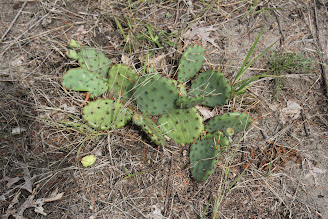Yesterday I went down to the Rondeau area, in hopes of catching up with a couple of birds, one of which being the juvenile Purple Gallinule found by Steve Charbonneau on Tuesday, at the Blenheim Sewage Lagoons. This is apparently the first record for Chatham-Kent.
It rained most of the way there, and upon pulling up to the lagoons, there was quite a bit of lightning. It was decided that standing out in the open on the lagoons with a metal tripod was probably not in my best interest. So instead, I opted to go to Erieau first. There were quite a few gulls, terns, and cormorants on tbe pier, in the trees, and on the beaches. I picked through them, but was unable to turn up anything good. I had about 250 (probably more) Common Terns, which is the most I had ever seen at once. Hardly any shorebirds, other than three Sanderlings, and a few Spotted Sandpipers. I flushed a Black-crowned Night-Heron from the base of the pier, which seemed like a really odd spot. My first for the Rondeau area.
Afterwards, the rain seemed to let up a bit, so I went back to the sewage lagoons. The sky seemed sort of threatening, so I left the camera in the car. It took a bit, but finally the Purple Gallinule made its appearance. Quite the pretty thing, even if it wasn't an adult. It hopped up onto some Phragmites and sat and preened itself. It was up high enough we were able to have it at eye level!
We checked the sprinkler cell, and found lots of Semipalmated Sandpipers, Least Sandpipers, and yellowlegs, as well as a few Baird's Sandpipers, Pectoral Sandpipers, and Stilt Sandpipers.
Afterwards, I went to Keith McLean. The birders from the lagoons also ended up there! It was raining, so again no camera!
The water is quite high, so we couldn't go too far back. We heard a Common Gallinule, which made it a two gallinule day. There was also a nice Baird's and Stilt Sandpiper together feeding quite close to us.
I was joined by Ezra Campanelli, and we walked along the road to where my target bird was seen feeding. It took a couple minutes, but soon the Red Knot was spotted! A beautiful juvenile. Knots are probably my favourite bird! There was also a gorgeous juvenile Short-billed Dowitcher.
Ezra and I then headed into the park. I didn't really know what to do, so we decided just to do South Point Trail and see what we could see. On the way, we decided to hit the beach access off the VC. There was a Red-headed Woodpecker there upon parking, which was nice. We noticed a large flock of loafing gulls and terns, so we started our way down the beach to see what was with them. The reoccurring theme of the day was that there were no good gulls to be found! As we walked back, we came across a group of three Ruddy Turnstones. They were a FOY for Ezra, and one we had hoped for, so that was a success.
Next up was South Point. Not too much to be seen. We went out to the beach at the lighthouse, and along the way I caught a ribbonsnake, a lifer for the both of us.
Again, we saw a huge group of gulls, so we went after them. Nothing to be seen! We ended up walking up to Dog Beach, where we cut in and walked back to the car along Lakeshore. Ezra had to leave back to Hamilton, so we parted ways. By this point the skies had cleared (finally), and I had noticed some cool plants along the walk, so I decided to retrace our steps, and see what I could see along the way.
One of the highlights was this. I am pretty sure it is Yellow Flatsedge (Cyperus flavescens). It is an S2 in Ontario, and considered rare in Chatham-Kent.
Another highlight was Small-headed Rush (
Juncus brachycephalus). I admittedly am not super good at rushes, but I am pretty confident in this ID!
At one point I noticed a number of caterpillars feeding on Small-flower False Foxglove (Agalinis purpurea parviflora), which turned out to be Common Buckeyes. I had seen a number of adults of this species as well.
I also saw a Five-lined Skink. Always a treat. This is a juvenile, note the blue tail.
A photo dump of some of the other plants I saw.
 |
Trailing Fuzzy Bean (Strophostyles helvola)
|
 |
Northern Evening Primrose (Oenothera parviflora)
|
 |
Redwhisker Clammyweed (Polanisia dodecandra)
|
 |
Seaside Sandmat (Euphorbia polygonifolia)
|
 |
Tumbleweed (Salsola tragus)
|
 |
| Cylindrical Blazing Star (Liatris cylindracea) |
 |
| Golden Sedge (Carex aurea) |
And of course, the mystery prickly pears (Opuntia sp.) of Rondeau. They are not native to the park, and I don't think anyone really knows for sure their species or origin!
I cut inland, and went to the washout. Very little bird-wise, so here are some more plants :-)
 |
Matted Spikerush (Eleocharis intermedia)
|
 |
Blunt Spikerush (Eleocharis obtusa)
|
 |
Straw-coloured Flatsedge (Cyperus strigosus)
|
I pished up a storm on the way back, and got a bunch of vireos (Red-eyed, Warbling, and a Philadelphia), a couple warblers, and some flycatchers. I am pretty sure I had a Yellow-bellied Flycatcher, but it managed to hide behind the leaves!
Just before leaving, I head a Black-bellied Plover calling out towards the lake from the South Point parking lot. A bit unexpected, but welcome!
Overall, a very successful day in Rondeau, despite all the rain!















































